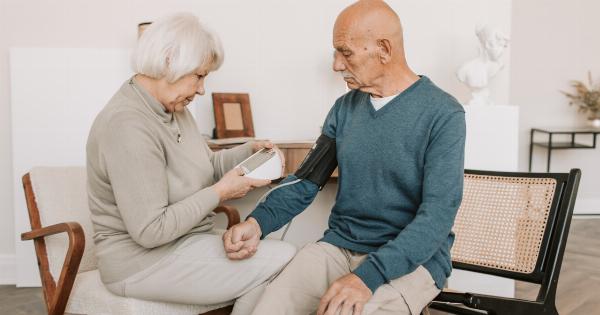Blood pressure is a measurement of the force of blood against the walls of your arteries as your heart pumps it around your body.
Blood pressure readings are taken using two numbers – the systolic pressure (the pressure when your heart beats) over the diastolic pressure (the pressure when your heart rests between beats). A healthy blood pressure reading is usually around 120/80 mm Hg.
While high blood pressure is typically what most people worry about, having a low blood pressure is also a concern.
Low blood pressure, also known as hypotension, occurs when the systolic pressure is below 90 mm Hg and the diastolic pressure is below 60 mm Hg. While it’s not necessarily dangerous to have an occasional low blood pressure reading, persistent hypotension can have serious health risks.
Causes of Low Blood Pressure
Some people have naturally low blood pressure and it doesn’t cause them any problems.
However, if you normally have healthy blood pressure and then it suddenly drops, you may want to investigate why this is happening as it could be a sign of an underlying health issue. Here are some causes of low blood pressure:.
1. Dehydration
When you’re dehydrated, your body doesn’t have enough fluid to maintain healthy blood pressure levels. This is why you may feel light-headed or dizzy when you’re thirsty.
Drinking plenty of water and staying hydrated is crucial to maintaining healthy blood pressure levels.
2. Medication
Some medications can cause a drop in blood pressure as a side effect. Beta-blockers, antidepressants, and diuretics are just a few examples of medications that can lower blood pressure.
If you’re taking medication and experiencing symptoms of low blood pressure, talk to your doctor about your options.
3. Blood Loss
If you lose a significant amount of blood, your body won’t have enough fluid to maintain healthy blood pressure levels. This is why people who experience significant blood loss may feel light-headed or faint.
If you experience heavy bleeding, seek medical attention immediately.
4. Heart Problems
Heart problems such as a heart attack, heart valve problems, and heart failure can all cause low blood pressure. If you have a heart condition, your doctor may need to monitor your blood pressure regularly to ensure it stays within a healthy range.
5. Infection
If you’re experiencing an infection such as sepsis, it can cause a drop in blood pressure. This is because your body is fighting off the infection and diverting blood flow away from other parts of your body, including your brain and other vital organs.
If you’re experiencing an infection and feel light-headed or dizzy, seek medical attention immediately.
Dangers of Low Blood Pressure
While it’s not necessarily dangerous to have a low blood pressure occasionally, experiencing persistent hypotension can have serious health risks. Here are some of the dangers associated with low blood pressure:.
1. Dizziness and Fainting
If your blood pressure is too low, you may experience dizziness or fainting. This can be dangerous if you’re driving or operating heavy machinery. If you experience dizziness or fainting, it’s important to see a doctor.
2. Organ Damage
When your blood pressure is too low, it can reduce the flow of blood to your vital organs such as your brain, heart, and kidneys. This can cause damage to these organs over time. In severe cases, it can even lead to organ failure.
3. Shock
If your blood pressure drops too low, it can cause shock. Shock is a life-threatening condition that occurs when your body can’t get enough blood to its vital organs. Symptoms of shock include rapid heartbeat, rapid breathing, and pale, clammy skin.
If you suspect you’re experiencing shock, seek medical attention immediately.
4. Falls and Fractures
Low blood pressure can increase your risk of falls and fractures, particularly in older adults. If you’re experiencing low blood pressure, it’s important to take extra precautions to prevent falls.
5. Pregnancy Complications
Low blood pressure during pregnancy can increase the risk of complications such as premature birth, poor fetal growth, and preeclampsia. If you’re pregnant and experiencing low blood pressure, talk to your doctor about your options.
Treatments for Low Blood Pressure
The treatment for low blood pressure depends on the underlying cause. Here are some common treatments:.
1. Fluids
If your low blood pressure is caused by dehydration, the treatment may be as simple as drinking fluids.
2. Medication Adjustment
If your low blood pressure is caused by medication, your doctor may adjust your dosage or switch you to a different medication.
3. Compression Stockings
If you experience orthostatic hypotension (a drop in blood pressure when standing up), wearing compression stockings can help improve blood flow to your lower extremities.
4. Lifestyle Changes
Making lifestyle changes such as eating a healthy diet, exercising regularly, and avoiding alcohol and tobacco can help improve your blood pressure levels.
Conclusion
Low blood pressure is a concern if it’s persistent, as it can have serious health risks. If you’re experiencing chronic low blood pressure, talk to your doctor about the underlying cause and possible treatment options.
Maintaining healthy blood pressure levels is crucial for overall health and well-being.





























